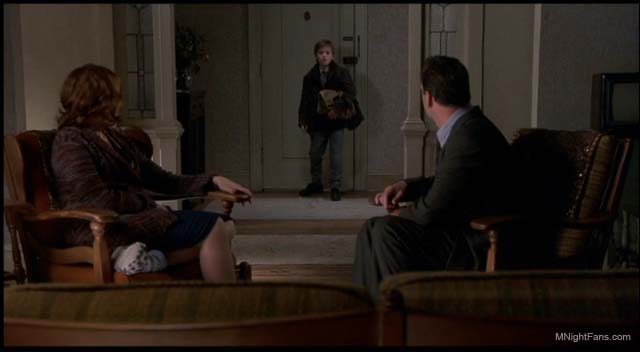You're looking at the story from a helicopter. You see all the roads, the cars and characters. You see where they've been, where they're going. You know all the curves of the road, the impending storm, the lay of the land.
Your readers don't.
They see the story one turn at a time. They're on the road surrounded by trees. You want their ride to be enjoyable, sometimes fast, sometimes frightening. Maybe an unexpected turn or new terrain they didn't see coming. You want the ride to be enjoyable.
Satisfying.

But you can never see the road like the reader. You don't have beginner's mind. You already know the story, you've seen it and felt it. The challenge is getting that story in words so the reader experiences the same ups and downs you do writing it. You want enough foreshadowing that they'll be surprised by a turn of events, but not too little that they'll be lost and frustrated.
It's like balancing cats on spinning plates.
You need to satisfy your own writing sensibilities, to have a story that fulfills your vision. But take hints from your readers. Cultivate a group of betareaders--people that will read the rough draft to uncover plot holes or identity confusion. Look for patterns. Only they have the beginner's mind to see it from the road.
You won't please everyone, so don't try. In The Annihilation of Foreverland, reviewers have exclaimed they loved the intrigue and the surprise ending. Other reviewers said it was too easy, they figured out the entire plot in the first chapter.
I have an idea of where my story arc is going, but I don't have it all figured out. There's no way to do that. In fact, I've learned to trust that those little side roads will be revealed as I get down the main road, sometimes making a detour to find an exciting surprise or intriguing side plot, maybe a new character. Sometimes that side road loops back to the beginning where I have to rewrite some scenes or delete them altogether.

I briefly outline three to five chapters. This might include five or six lines on my legal pad that name characters and scene. What's going to happen? Where are they going? What will they discover?
Next, I outline each chapter in more depth. This might include two or three full pages of legal pad, including brief actions and snippets of dialog. Knowing where I'm going, spying the landscape from the helicopter, helps me settle on the road wearing the reader's eyes. Only I know where I'm going.
Having that big twist in my back pocket helps to foreshadow. A story gets boring when you can predict it. Like they're going meet at the castle and then fight and the good guy wins. I'm not saying the good guy shouldn't win, just not a fairy tale.
Most of the time, I know when the twist is coming. I want the reader breathless when they hit it. I want that experience you get when the wedding band rolls across the floor in the The Sixth Sense. When camera pans down Jaye Davidson in The Crying Game. I want the reader to feel that moment of holy shit.

If you don't have the twist in mind, search for it along the way. You might see it in the trees on your way to the end. Once you find it, you can build foreshadowing on the next pass through. In Foreverland is Dead, I had the twist in mind. It was decent, perhaps not as shocking as I wanted it to be, but I was feeling relatively satisfied. I was wrapping up loose ends in the last chapter, setting up a smooth landing when the real twist popped out of the woods. I was writing the last paragraph, the very last paragraph of the entire book, when it punched me in the face. I was breathless.
That's when the story writes itself.
I went back to the beginning and rewrote scenes, changed names and dropped in hints, this time building up to the real twist. Almost 20,000 words were slashed as a result. But I got the story right. None of your words are sacred. None of them are immortal. Don't be afraid of the hatchet.
Burn the words you don't need. Slay the boring paragraphs. Behead the errant chapters. Do as William Faulkner instructed to leave your readers breathless and satisfied.
Kill your darlings.
To be continued...
THE BERTAUSKI STARTER LIBRARY is FREE!
Get 3 full-length novels and 1 novella.

No comments:
Post a Comment